What Is Chintz? Learn About The Floral Fabric You’re Sure To See In Southern Homes
Whether you love it or loathe it, this historic textile isn’t going anywhere soon.

Utter the word “chintz,” and many Southerners will immediately see visions of their grandmothers’ sunrooms, complete with matchy-matchy furniture suites wrapped in waxy, floral-print fabrics. For some Southerners, chintz inspires nostalgia or sentimentality, but isn’t necessarily a design trend they’re looking to revisit. For others, chintz has swung back into style, a hallmark of the British maximalist and “grandmillennial” approaches to decorating that lean on elements like bold color and decidedly feminine elements, respectively. For others still, chintz has always been (and will forever be) a timeless choice, a favorite of celebrated designers like Dorothy Draper, the creative eye behind The Greenbrier’s delightfully maximalist interiors. But whether you’re all-in on the fabric or are content to see it only in your memories, the textile’s early origins prove that, like it or not, chintz has major staying power.
Meet the Experts
Jessica R. Smith is a Fibers Professor at Savannah College of Art and Design in Georgia
Rudy Saunders is the Design Director of Dorothy Draper & Co., Inc
Elly Poston Cooper is an interior designer in Richmond, Virginia
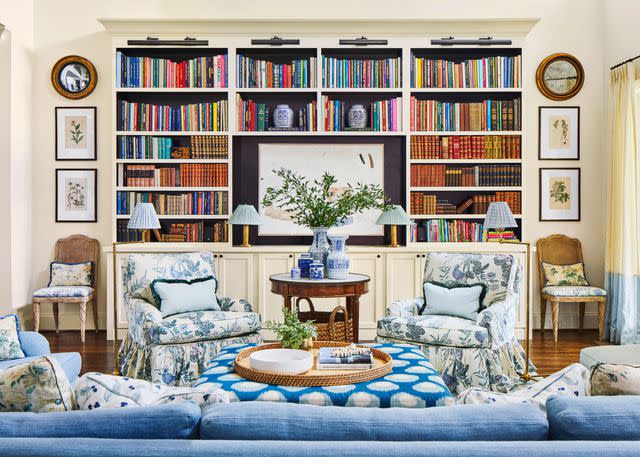
What Is Chintz?
“Chintz is a lovely painted or printed cloth with origins from India, which was later replicated throughout the world,” says Jessica R. Smith, Fibers Professor at Savannah College of Art and Design in Georgia. “Typically cotton was used for the design of chintz, but examples of silk, linen, and wool can be found in museum collections.”
Originally, chintz was largely defined by the process in which the fabric was made. “The use of block-printing, resist-dyeing, and painting have been and are still employed in the multi-stage process of applying dye to surface when chintz is being created,” notes Smith. “The traditional Kalamakari art form refers to the painted version of chintz. These textiles are usually floral in theme and brightly colored, though the “tree of life” and stamped geometric designs are also grouped with chintz at times. Tonal, black, and white designs can also be found in contemporary presentations of chintz designs.”
Today, the word chintz is used much more liberally than it was at the start, referring to almost any sort of fabric covered in a large-scale floral. That’s a product of the Industrial Revolution, explains Smith: “Chintz was mechanized, shifting the definition of the textile from a technical process to more of an aesthetic pattern and trend.”
Related: Grandmillennial: The New Grandma-Inspired Style Trend We're Totally Here For
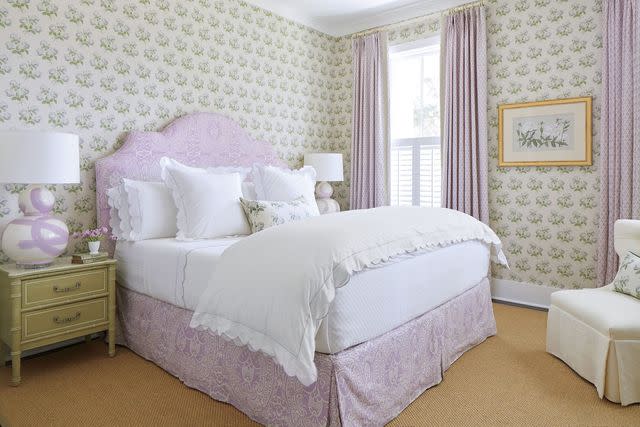
Where Did Chintz Come From?
While your introduction to the fabric may have been Great Aunt Mitzi’s dining room drapes, its roots go back much, much further. “The textile chintz emerged from India in the 16th century,” says Smith. Historically, chintz has been incorporated in everything from religious sites to wardrobes. “In India, the multi-process dyeing techniques were used in various ways from fashion to interiors, as well as temple and luxury tent hangings,” explains Smith. “By the 17th century, the textiles became a very popular export in the European and American markets, and by the 18th century, it was being reproduced all across Europe, increasing its visibility and popularity.”
As with many decorating trends, chintz has fallen in and out of fashion, but there’s no denying it was very much in vogue in the U.S. in the 1960s, when First Lady Jackie Kennedy introduced it to the White House, and again in the 1980s, First Lady Nancy Reagan incorporated it in her own revamp of the White House interiors. Given our current renewed interest in British maximalism and the advent of “grandmillennial” style a few years ago, chintz has once again become an interior design stronghold—and doesn’t seem to be on its way out anytime soon.
Related: 7 Things Designers Immediately Notice When They Enter A Room
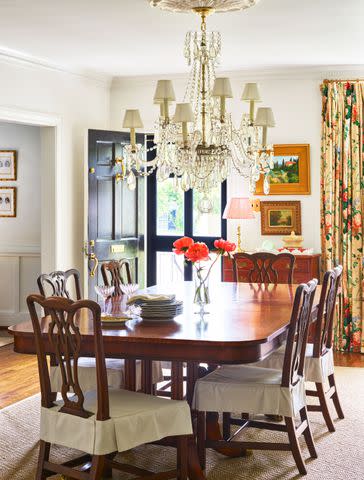
How To Decorate With Chintz Like A Designer
Known for infusing American homes with color at an admittedly gray period in history (during the Great Depression and following World War II), legendary designer Dorothy Draper was also famous for her liberal use of chintz. “Mrs. Draper’s love of floral chintz [stemmed] from her passion and love of flowers,” says Rudy Saunders, Design Director of Dorothy Draper & Co., Inc. “She is quoted as saying, ‘Many people think roses are our trademark, only because I love them so.’ This love of florals was a part of her philosophy that surrounding yourself with happy colors and beautiful flowers would lift your spirits.”
Today, decorators who skew more traditional still love chintz for its durability and versatility. “They say it’s the original performance fabric,” notes Richmond, Virginia, designer Elly Poston Cooper. “It hides a bounty of sins, and every room needs a hero fabric that can pull a space together.” Beyond serving as a statement-maker, it can also provide palette inspiration for the overall scheme. “A chintz usually has numerous colors to pull from,” says Cooper. “We love to find the weird chartreuse or splash of melon from the fabric and incorporate it in lampshades, throw pillows, glossy trim for built-ins, etc. This lets your eye travel calmly through the room and is a go-to trick of the trade.”
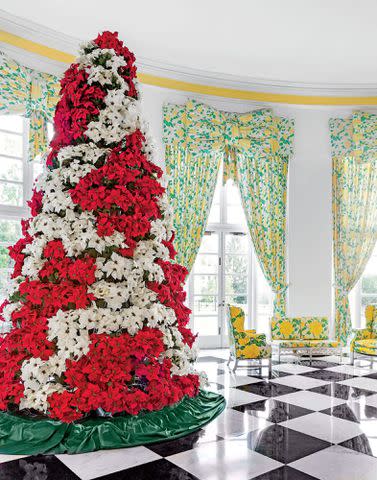
Where To See Chintz In the South
Beyond your sister’s bedroom or your next door neighbor’s den, there’s one place in the South you can always get your chintz fix: The Greenbrier, the beloved and historic resort in White Sulphur Springs, West Virginia, where designer Dorothy Draper’s fabric selections are as much a part of the scenery as the Allegheny Mountains. “At The Greenbrier, she used bold floral chintz fabrics throughout to add a warm residential feeling to the public spaces,” says Saunders. “Mrs. Draper would design fabrics specifically for projects, something we continue to do for clients today, and this is the case with many of the ones found at The Greenbrier. She designed Fazenda Lily, Fudge Apron, and Rhododendron all to be used for chintz upholstery, window treatments, and wall coverings throughout the resort.”
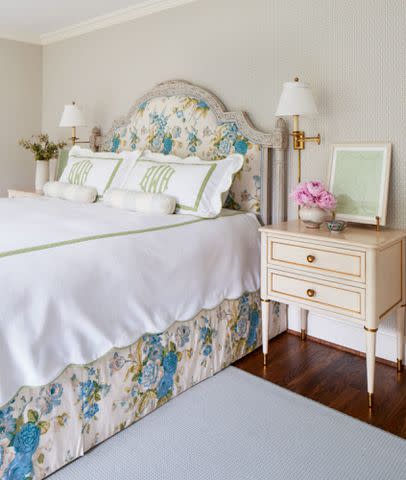
Where To Shop For Chintz
Well-known design houses like Schumacher, Colefax & Fowler, Jean Monro, and Lee Jofa (their Glenville Glazed Chintz is pictured on the bed above) are a great place to start. While these brands are sold exclusively to the trade, you can find some of their fabrics on sites like DecoratorsBest.com and LADesignConcepts.com. Dorothy Draper Fabrics & Wallcoverings, mother-daughter textile company Sister Parish and U.K.-based Christopher Moore sell direct-to-consumer and carry a number of chintz fabrics in multiple colorways.
For more Southern Living news, make sure to sign up for our newsletter!
Read the original article on Southern Living.

